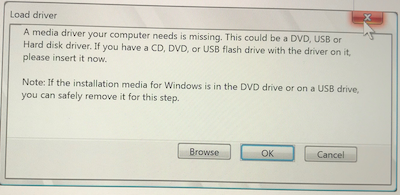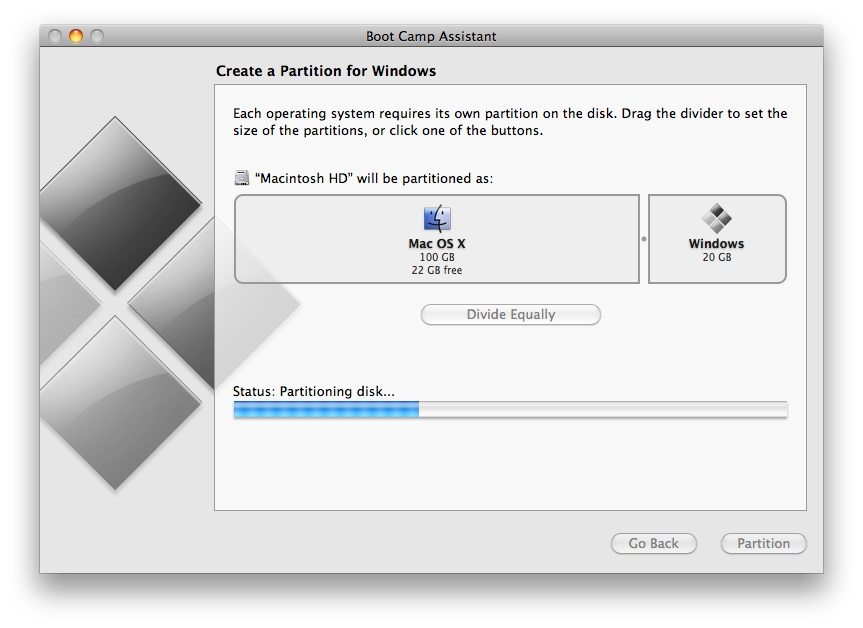1. You do not copy the ISO to the USB manually. It is done by BC assistant onto to a FAT32 USB.
2. What year/model is your Mac? If your Mac has a built-in Optical drive and is not from 2012, you will most likely need to use a physical DVD. Apple removed the following language from the support articles and uses model-specific logic in BC Assistant.

You can in fact boot Windows from a USB drive on a Mac. I've done this recently with the Windows 10 Technical Preview, but the software I used should work with Windows 7+, but it does have a disclaimer that says Windows 7 does not support USB 3.0, so if you're trying this on a newer Mac, you'd have to use Windows 8 or higher. How to Make Your Mac Boot from A USB Drive Operating system updates are important to keep up with the latest trends and technology. Here is the method to boot from USB and to recover data when the Mac becomes unbootable.

3. If the option to create a USB was manually added to Bootcamp info.plist, it will cause problems.
4. Your Windows ISO should be between 3.4-4GB. Anything larger indicates a mixed 32-bit/64-bit Installer that does not work with BC Assistant. You can download various ISOs from https://www.microsoft.com/en-us/software-download/home .
Jan 26, 2016 6:51 AM
To use any of these key combinations, press and hold the keys immediately after pressing the power button to turn on your Mac, or after your Mac begins to restart. Keep holding until the described behavior occurs.
Boot Mac From Usb
- Command (⌘)-R: Start up from the built-in macOS Recovery system. Or use Option-Command-R or Shift-Option-Command-R to start up from macOS Recovery over the Internet. macOS Recovery installs different versions of macOS, depending on the key combination you use while starting up. If your Mac is using a firmware password, you're prompted to enter the password.
- Option (⌥) or Alt: Start up to Startup Manager, which allows you to choose other available startup disks or volumes. If your Mac is using a firmware password, you're prompted to enter the password.
- Option-Command-P-R:Reset NVRAM or PRAM. If your Mac is using a firmware password, it ignores this key combination or starts up from macOS Recovery.
- Shift (⇧): Start up in safe mode. Disabled when using a firmware password.
- D: Start up to the Apple Diagnostics utility. Or use Option-Dto start up to this utility over the Internet. Disabled when using a firmware password.
- N: Start up from a NetBoot server, if your Mac supports network startup volumes. To use the default boot image on the server, hold down Option-N instead. Disabled when using a firmware password.
- Command-S: Start up in single-user mode. Disabled in macOS Mojave or later, or when using a firmware password.
- T: Start up in target disk mode. Disabled when using a firmware password.
- Command-V: Start up in verbose mode. Disabled when using a firmware password.
- Eject (⏏) or F12 or mouse button or trackpad button: Eject removable media, such as an optical disc. Disabled when using a firmware password.
Boot Mac Os From Usb
If a key combination doesn't work
If a key combination doesn't work at startup, one of these these solutions might help:
- Be sure to press and hold all keys in the combination together, not one at a time.
- Shut down your Mac. Then press the power button to turn on your Mac. Then press and hold the keys as your Mac starts up.
- Wait a few seconds before pressing the keys, to give your Mac more time to recognize the keyboard as it starts up. Some keyboards have a light that flashes briefly at startup, indicating that the keyboard is recognized and ready for use.
- If you're using a wireless keyboard, plug it into your Mac, if possible. Or use your built-in keyboard or a wired keyboard. If you're using a keyboard made for a PC, such as a keyboard with a Windows logo, try a keyboard made for Mac.
- If you're using Boot Camp to start up from Microsoft Windows, set Startup Disk preferences to start up from macOS instead. Then shut down or restart and try again.
Remember that some key combinations are disabled when your Mac is using a firmware password.
Learn more
Mac Boot Camp From Usb Drive Windows 10
- Learn what to do if your Mac doesn't turn on.
- Learn about Mac keyboard shortcuts that you can use after your Mac has started up.